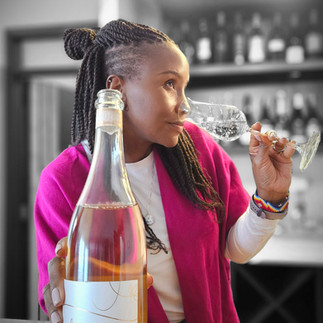Fun and flavour with the low and no alcohol trend
- DC
- Aug 31
- 3 min read
Our Kenya MD explores the topic of low and no alcohol wines, and other drinks. We love the focus on drinking more mindfully, and exploring better rather than more, in the subject of wine. And that includes low and no alcohol options.
Over the past 2 years, we have been getting requests from clients for a more palatable range of non-alcoholic options for spirits, beers and wine. But where is this trend coming from? Globally we are seeing a trend towards being more health conscious – what we consume and where it comes from. A big conversation has been around our gut and promoting good habits for our gut microbiome and alcohol among other things is seen as not so friendly in creating this healthy thriving microbiome.
We all know about Dry January but have you heard of Feb Fast, Dry July and Sober October? These campaigns encourage people to abstain from drinking alcohol for a month, often to raise money for charity or to focus on health benefits. People are also now becoming “sober curious”. Individuals critically examine why they drink, how much they drink, and the role alcohol plays in their social life and overall well-being. Unlike traditional sobriety, being sober curious doesn't always mean giving up alcohol completely or permanently. It's more about finding a balance that works for the individual and consuming NOLO (no or low alcohol) or dealcoholized options of their favourite drink.
It’s also important to get the terminology right in terms of non-alcoholic, NOLO or dealcoholized options. This is because in some cases there will still be trace amounts of alcohol and for people with religious or health complications with alcohol, we do not want to mislead them.
According to Wikipedia, In the United Kingdom, Government guidance recommends the following descriptions for "alcohol substitute" drinks including alcohol-free beer.
No alcohol or alcohol-free: not more than 0.05% ABV
Dealcoholized: over 0.05% but less than 0.5% ABV
Low-alcohol: not more than 1.2% ABV
In some parts of the European Union, beer must contain no more than 0.5% ABV if it is labelled "alcohol-free"
In Australia, the term "light beer" refers to any beer with less than 3.5% alcohol.
The industry has come a long way in creating options that have the aromas and flavour of alcohol but not the side effects. Fermentation is key to unlocking flavour especially in wine. Traditional non-alcoholic options include sweetened sparkling grape juice which tastes just like it sounds.
To create a dealcoholized wine, a normal wine is made and then the alcohol is removed by different processes such as vacuum distillation, reverse osmosis or spinning wine columns. So, while the alcohol is “removed” the wines are able to retain their aroma and flavour characteristics. Does it taste like wine? To be honest its different and may be an acquired taste for some but if you are lucky to get your hands on some well-made options, it becomes an enjoyable experience.
My top recommendations are based on personal experience and what I’ve been enjoying of late and recommending to all clients. Lautus De-Alcoholised Wines craft exceptional de-alc wines, aiming to become the leading South African producer in this growing category. They have options of white, red, rose and sparkling. My personal favourite is the Lautus Sparkling Rose – what I’ve found to be the closest to the real thing. Hints of strawberries, raspberries and a kiss of lime. Bubbles are fine and the wine has a lovely zing and zest. I highly encourage having these on your wine lists for guests!















































